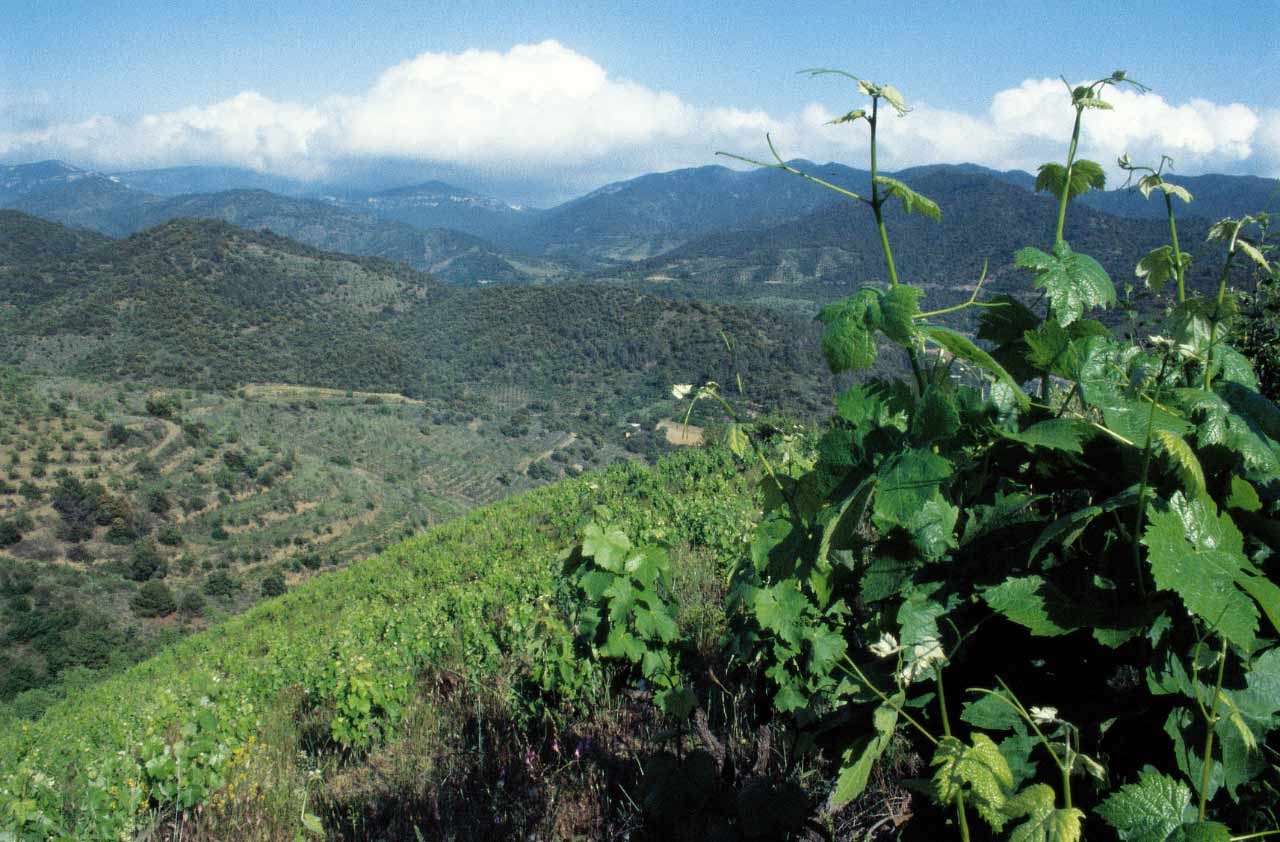.png.transform/rendition-xs/image_image%20(1).png)
Power and Glory: The Red Wines of Priorat
One of Spain’s most dynamic, awe-inspiring wine regions—and producer of some of the world’s most sought-after wines—Priorat is considered hallowed ground for lovers of brawny, rich red blends.

In this rugged, mountainous corner of Catalunya just south of Barcelona, freezing northerly winds collide with the Mediterranean’s warm, easterly Mistral breeze, while long summers and nutrient-poor soils force vines to reach deep into the earth in search of any sign of water. Inescapable heat and a preponderance of old vines ensure low yields, while vertiginous altitude gains make for wide day-night temperature shifts—not to mention difficult vineyard work. Of all of Spain’s famed regions, Priorat may just be the most punishing of all, and it shows in the scarcity of the wines: barely 10% of this already miniscule area is planted to the vine. So what could inspire a nearly millennia-long tradition of winemaking in this tiny, arid terroir?
The story of viticulture here began in the late 12th century with the arrival of the Carthusian monks, skilled winemakers who set about planting Priorat’s complex terrain to the vine after establishing the area’s famed Scala Dei monastery. For nearly seven centuries these vineyards persisted against all vagaries of nature, producing wine of distinct character—until being left to sudden ruin in the 19th century, the vines falling victim to the devastation of the phylloxera louse and the monks’ once-impressive holdings falling prey to state seizure.
Over the following decades, Priorat was largely—and altogether unjustly—ignored. It wasn’t until after the death of dictator Francisco Franco in 1975 that the region saw any sort of renewed viticultural interest, and even then it wasn’t until the 1980’s that well-known winemakers of other Spanish regions rediscovered the area’s potential for powerful, ageworthy red blends based on native grapes Garnacha and Cariñena (international varieties Cabernet Sauvignon, Syrah, Merlot, and Cabernet Franc are also permitted as blending partners).
The result? Deep, dense, and muscular reds with well-defined structure, potent tannins and a telltale minerality owing the area’s famous llicorella soil of black slate and quartz. Fast-draining, nutrient-poor, and interlaced with small bits of mica which serve to reflect sunlight and retain heat, this totally unique soil type only magnifies the potent effects of Priorat’s scorching heat, forcing roots to search deep into the soil—and creating one of the wine world’s most distinct, instantly-recognizable flavor profiles.
These wines are not for the faint of heart, veritably exploding across the palate with intense notes of black cherry, plum, blackberry compote, gravel, licorice, and cocoa. While the alcohol is often elevated and the supporting acidity surprisingly soft and fresh, these wines are also rich in secondary notes—balancing out a dense, warm fruit core with wet clay, petrichor, saline, spice, mint, and tar. Oak aging, a standard practice in the region, adds further complexity and nuance to its wines.
Curious to try for yourself? Be forewarned that Priorat, brawny and rich as it is, demands a full-flavor food pairing—think Venison, smoked ribs, full-bodied cheeses, braised lamb, or virtually any grilled meat or umami-rich roasted vegetable preparation. Fire up the grill and grab your corkscrew—happy pairing!

